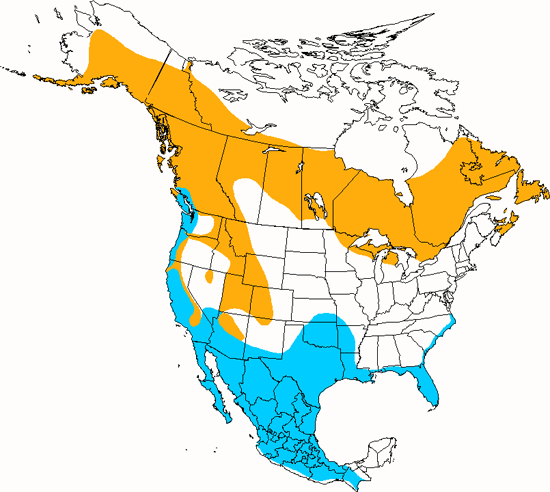Lincoln's Sparrow
Melospiza lincolnii

Perching

Length: 6 in. (15 cm )
A skulking and often difficult to see species, the Lincoln\s Sparrow winters commonly in low shrubby areas often along riparian areas and near water. Here it feeds almost exclusively on seeds. In the summer it nests in coniferous forest bogs and wet meadows. The nest is a shallow depression in a moist grassy or mossy tussock and lined with grass and hair. The nestlings are fed insects.'
The four-digit banding code is LISP.
Bibliographic details:
- Article: Lincoln's Sparrow
- Author(s): Dr. Biology
- Publisher: Arizona State University School of Life Sciences Ask A Biologist
- Site name: ASU - Ask A Biologist
- Date published: 13 Jul, 2017
- Date accessed: 22 September, 2025
- Link: https://askabiologist.asu.edu/activities/bird/lincolns-sparrow
APA Style
Dr. Biology. (Thu, 07/13/2017 - 15:37). Lincoln's Sparrow. ASU - Ask A Biologist. Retrieved from https://askabiologist.asu.edu/activities/bird/lincolns-sparrow
Chicago Manual of Style
Dr. Biology. "Lincoln's Sparrow". ASU - Ask A Biologist. 13 Jul 2017. https://askabiologist.asu.edu/activities/bird/lincolns-sparrow
MLA 2017 Style
Dr. Biology. "Lincoln's Sparrow". ASU - Ask A Biologist. 13 Jul 2017. ASU - Ask A Biologist, Web. https://askabiologist.asu.edu/activities/bird/lincolns-sparrow
Be Part of
Ask A Biologist
By volunteering, or simply sending us feedback on the site. Scientists, teachers, writers, illustrators, and translators are all important to the program. If you are interested in helping with the website we have a Volunteers page to get the process started.








